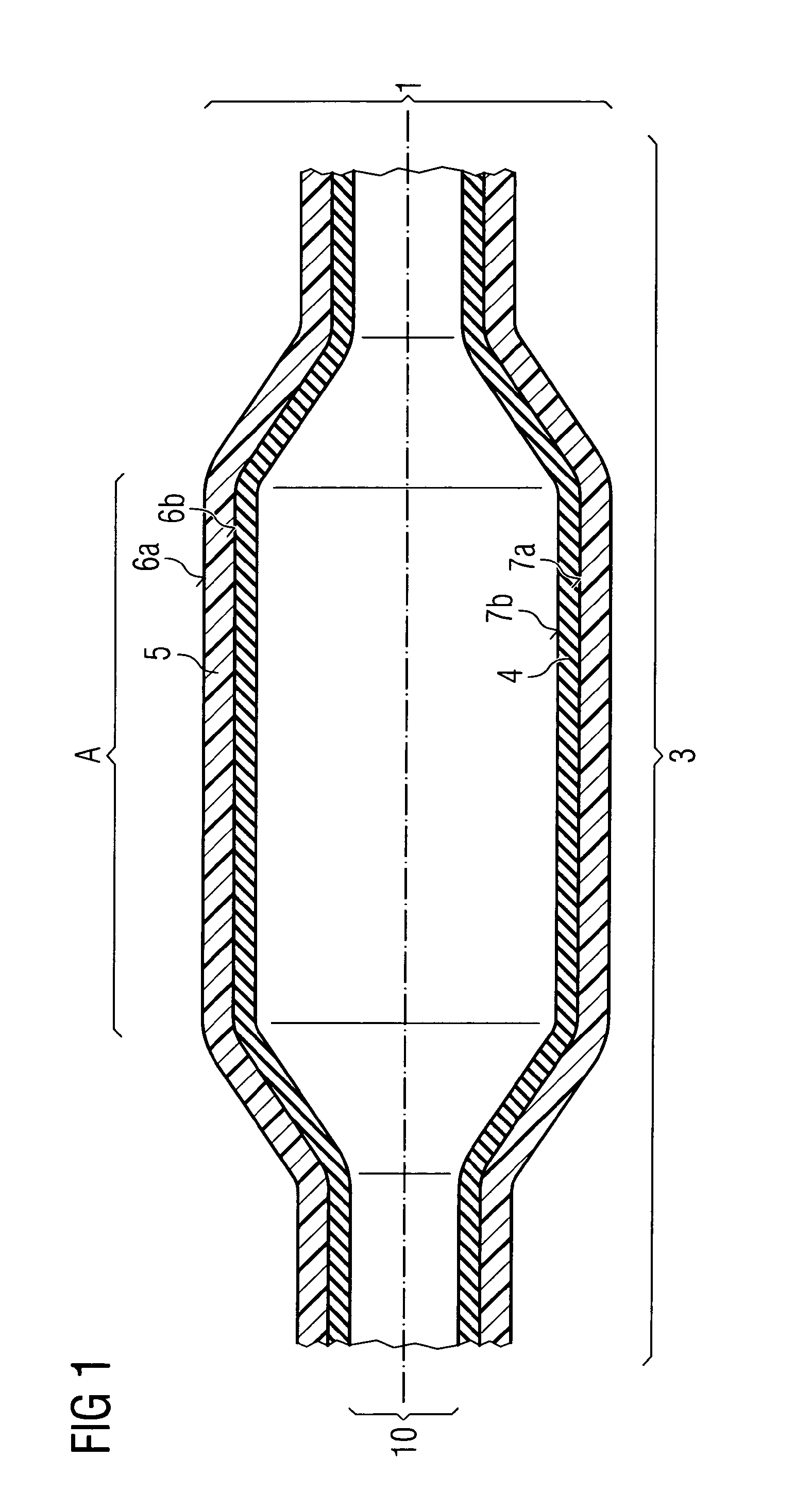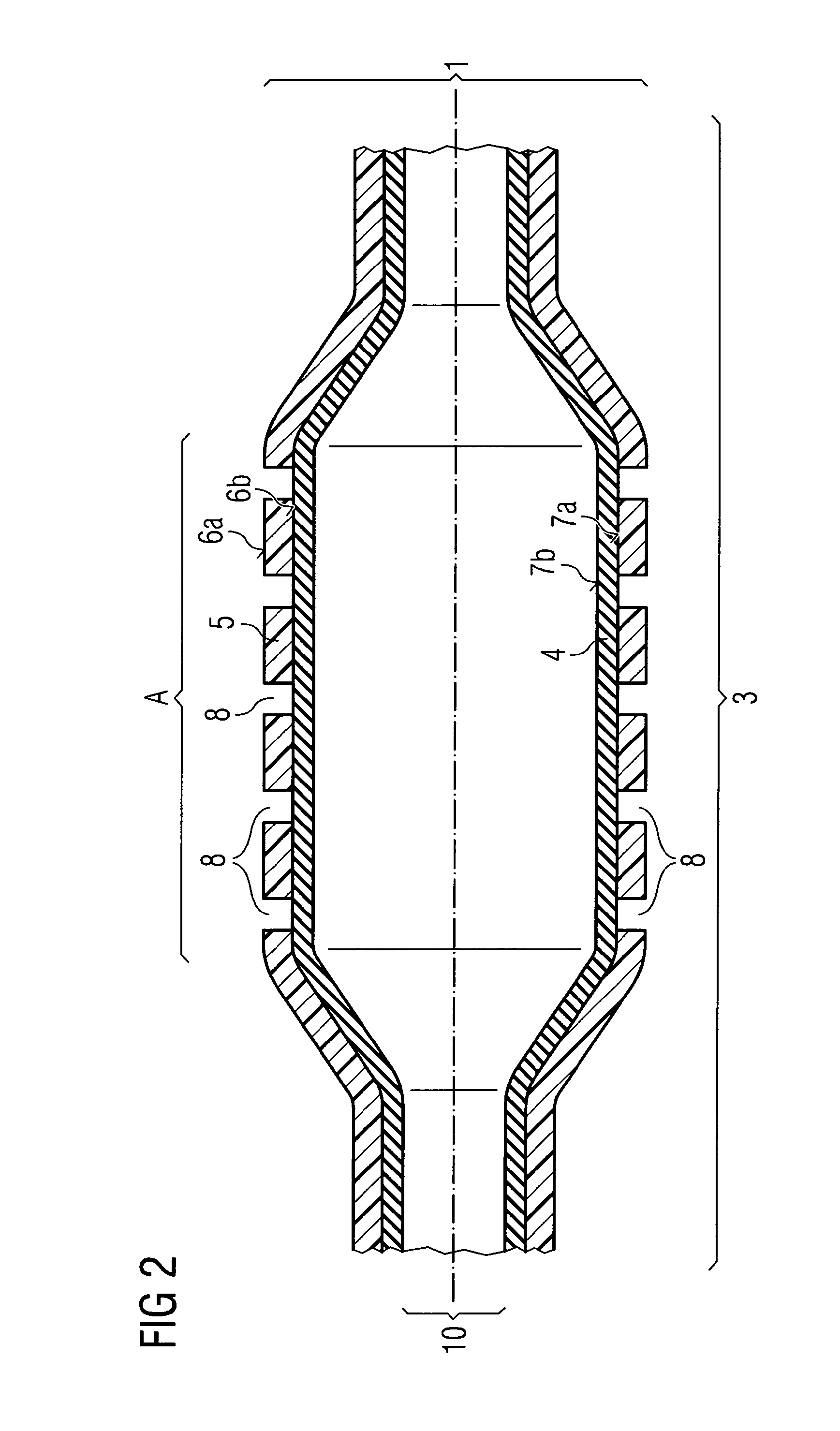Double layered balloons in medical devices
a technology of double-layered balloons and medical devices, applied in the field of medical devices, can solve the problems of stents being compressed longitudinally, stents can slip off the balloon, and get lost in vasculature, and achieve the effects of low compliance, high burst pressure and/or durometer, and low compliance ra
- Summary
- Abstract
- Description
- Claims
- Application Information
AI Technical Summary
Benefits of technology
Problems solved by technology
Method used
Image
Examples
example
Example 1
Balloon-Catheter for Delivery of a Stent with a Medical Balloon Having 2 Layers Over the Whole Surface of the Medical Balloon
[0070]In a balloon catheter (1)—depicted in FIG. 1—for delivery of a stent (2), the medical balloon (3), is constructed out of 2 layers, an inner layer (4) with an inner surface (7b) and an outer surface (7a) as well as an outer layer (5) with an inner surface (6b) and an outer surface (6a). The inner layer (4) is fixed air-tightly to the catheter shaft (10). This inner layer (4) can thus be expanded and contracted during PTCA or other minimal invasive surgery through the application of pressure provided by a gas and / or a liquid to its inner surface (7b) as a consequence also expanding stent (2) disposed about the balloon (3) in Area (A). Inner layer (4) is manufactured from nylon 12 giving the compliance and burst-pressure needed. Over the whole of the outer surface (7a) of inner layer (4) the outer layer (5) is disposed. The outer layer (4) is const...
example 2
Balloon-Catheter for Delivery of a Stent with a Medical Balloon Having 2 Layers Over the Whole Surface of the Medical Balloon—Showing Perforations in the Outer Layer
[0071]Example 2 exemplifies a balloon catheter (1)—depicted in FIG. 2—very similar to the one already described in example 1 and thus also showing a medical balloon (3) being constructed of 2 layers, an inner layer (4) and an outer layer (5) with the inner layer (4) being expandable and contractible. Again the inner layer (4) is manufactured from nylon 12 giving the compliance and burst-pressure needed. In principle the outer layer (5) is disposed over the whole of the outer surface (7a) of inner layer (4) and is constructed from low durometer PEBAX® of a shore hardness equal to or less than 40D. In difference to example 1 in this example the outer layer (5) is perforated by holes (8) down to the outer surface (7a) of the inner layer (4). Accordingly, the outer surface (5) has a high adhesion strength helping in stent re...
example 3
Balloon-Catheter for Delivery of a Stent with a Balloon Having 2 Layers with the Outer Layer Only Covering the Area of Stent Contact in a Criss-Cross Pattern
[0072]Example 3 exemplifies a balloon catheter (1)—depicted in FIG. 3—very similar to the one already described in example 1 and thus also showing a medical balloon (3) being constructed of 2 layers, an inner layer (4) and an outer layer (5) with the inner layer (4) being expandable and contractible. Again the inner layer (4) is manufactured from nylon 12 giving the compliance and burst-pressure needed. The outer layer (5) is exclusively disposed in a criss-cross pattern in area (A) designated to carry the stent (2) thus only in the area getting into contact with the stent (2). As the outer layer (5) is also constructed from low durometer PEBAX® providing a tacky / sticky surface with high adhesion strength this is providing stent retention and reduces stent foreshortening.
PUM
 Login to View More
Login to View More Abstract
Description
Claims
Application Information
 Login to View More
Login to View More - R&D
- Intellectual Property
- Life Sciences
- Materials
- Tech Scout
- Unparalleled Data Quality
- Higher Quality Content
- 60% Fewer Hallucinations
Browse by: Latest US Patents, China's latest patents, Technical Efficacy Thesaurus, Application Domain, Technology Topic, Popular Technical Reports.
© 2025 PatSnap. All rights reserved.Legal|Privacy policy|Modern Slavery Act Transparency Statement|Sitemap|About US| Contact US: help@patsnap.com



